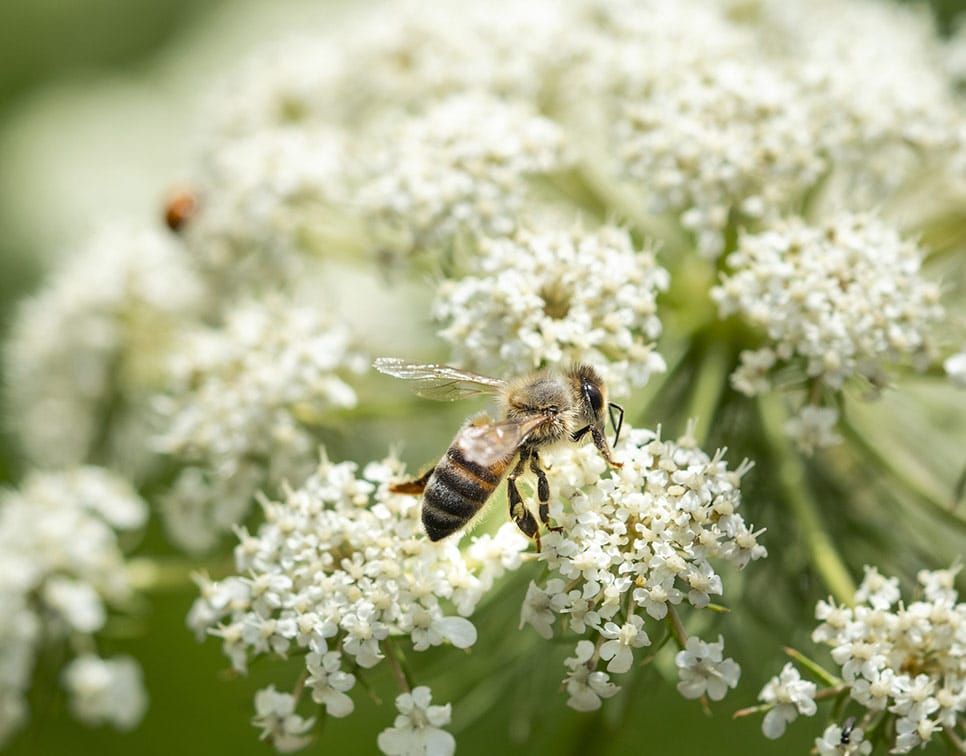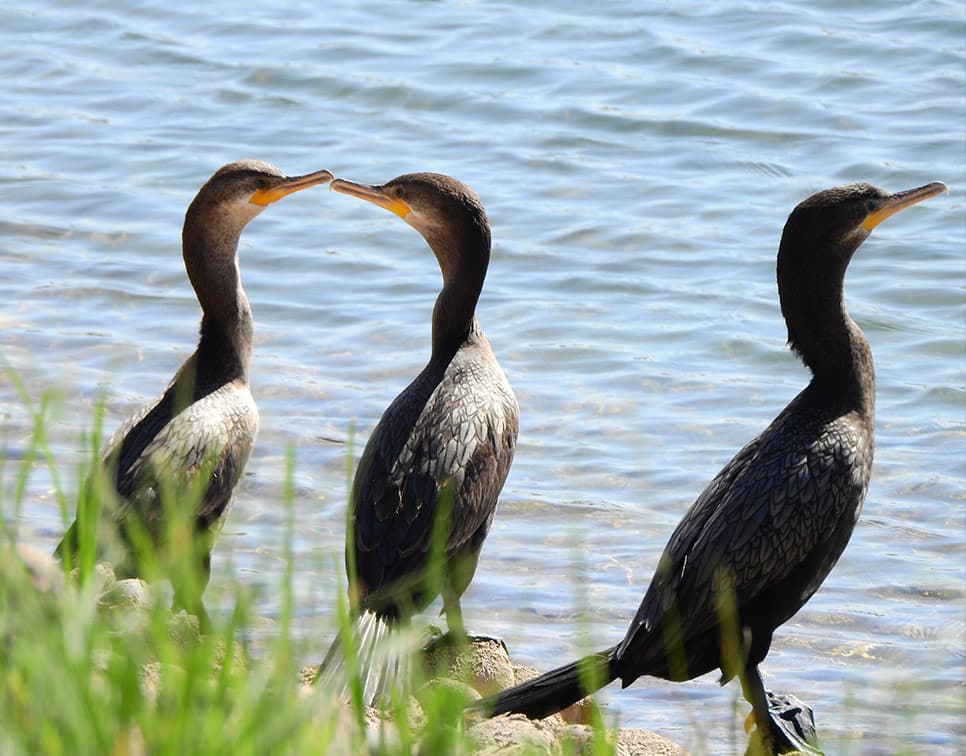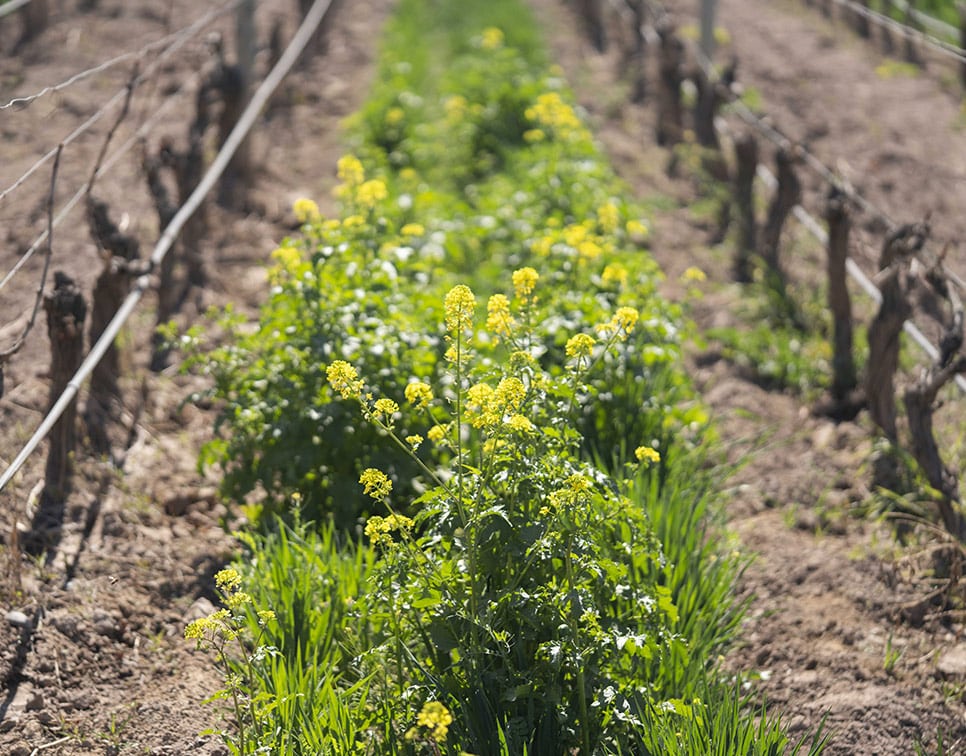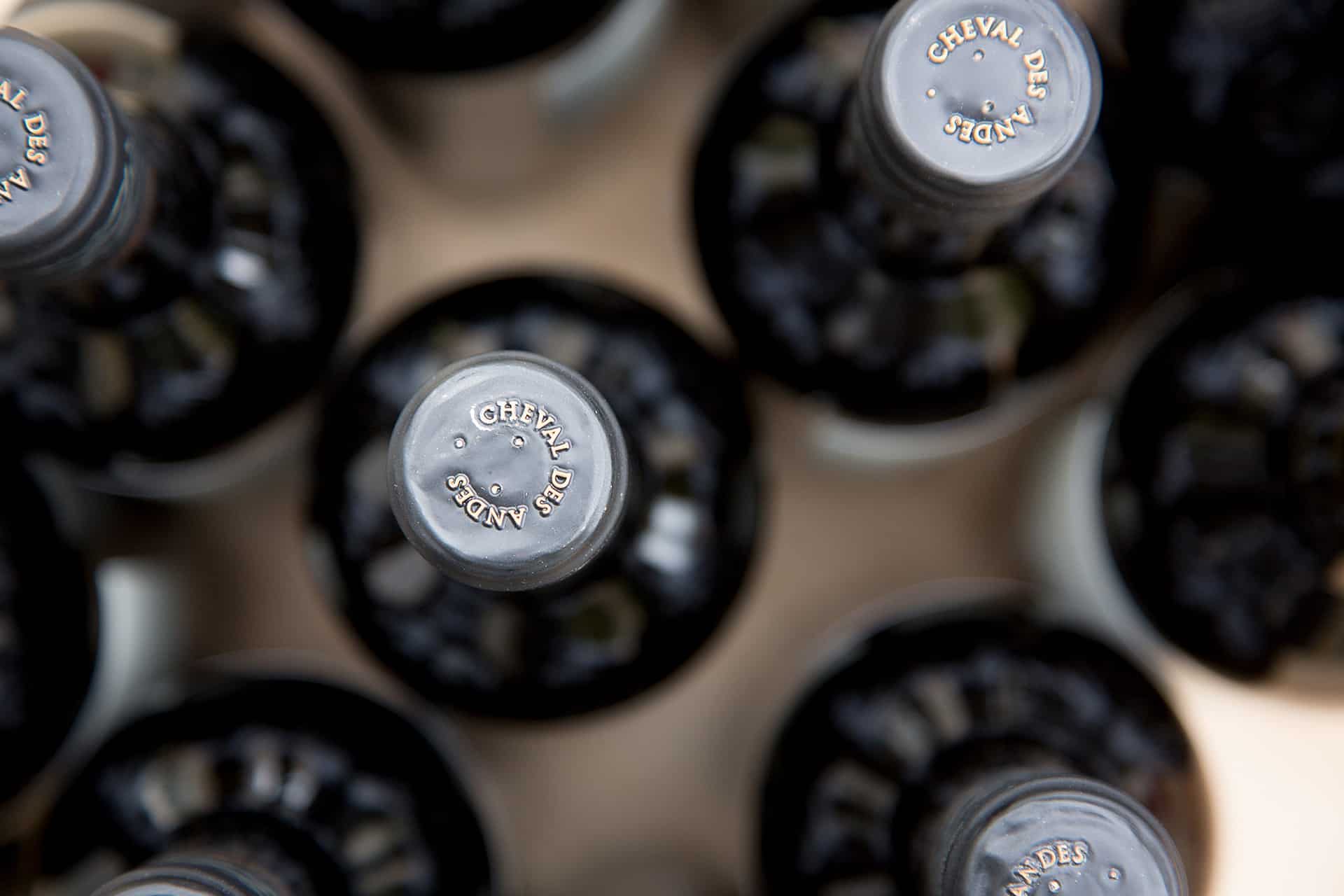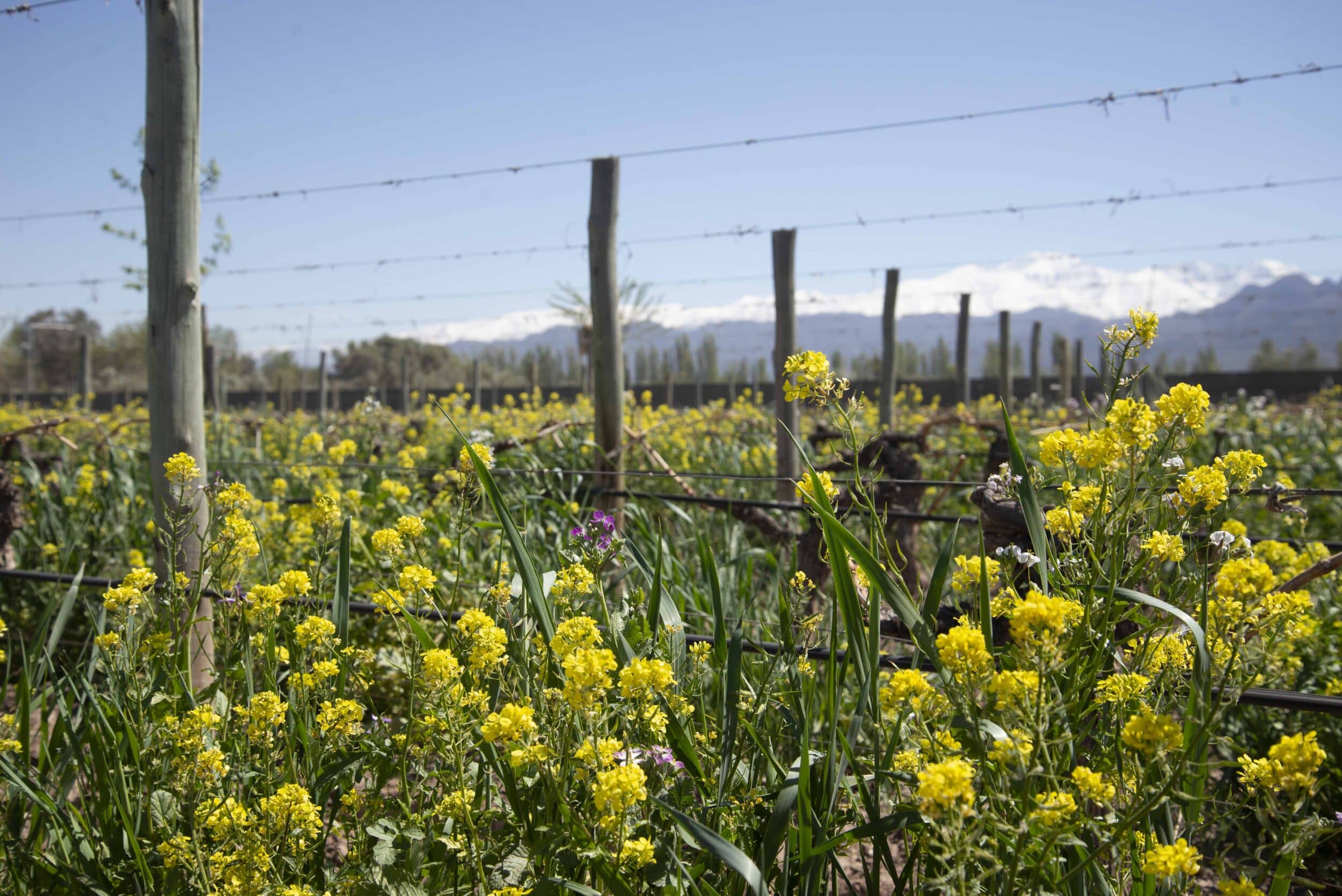
The impact of climate change is no longer in doubt.
At Cheval des Andes, we have adopted a comprehensive agroecological approach to preserve this exceptional terroir, which we proudly safeguard, ensuring it can be passed on to future generations.
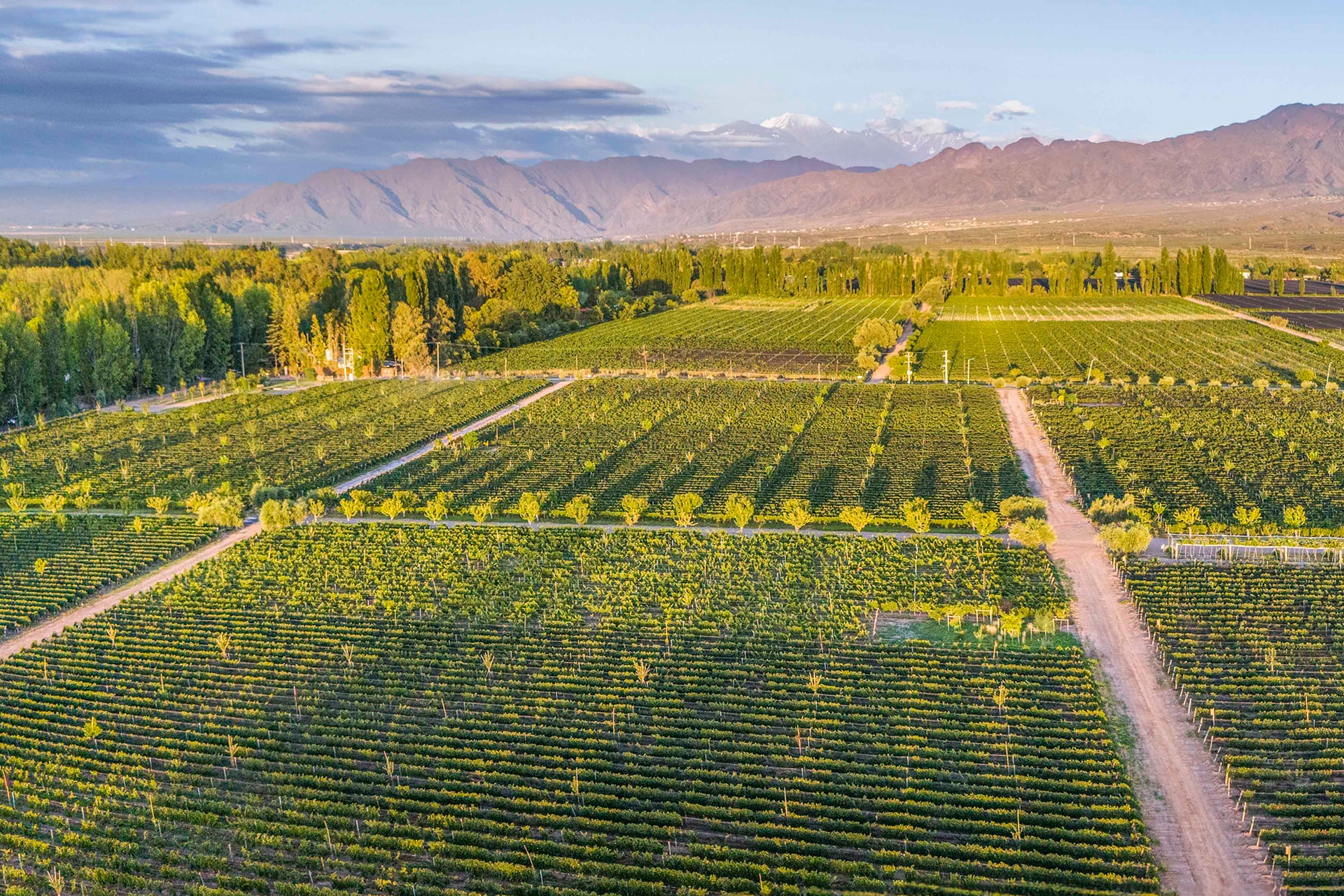
It all begins with glaciers water
Agriculture developed in the Mendoza region thanks to an irrigation system set up as far back as Inca times to channel water from melting glaciers and irrigate crops.
The first stage of our agroecology project was to manage irrigation more efficiently. In 2016 we built a first reservoir to store water during the winter season and distribute it accurately in the dry season. Today, we have 3 reservoirs in Altamira and Las Compuertas estates, and the entire vineyard is equipped with a drip system that has increased irrigation efficiency by up to 30%.
Inspired by nature
In 2019, Cheval des Andes, inspired by the pioneering work of Château Cheval Blanc, has embarked on an agroecological journey after years of research and experimentation.
This approach draws inspiration from nature to strengthen the robustness of our agricultural system and create a harmonious, sustainable environment in our vineyards.
There is no longer monoculture, but rather a coexistence of diverse species that contribute to a thriving ecosystem. Soil fertility is naturally sustained by the cycle of vegetation, which returns essential nutrients to the earth at the end of its life cycle. In this delicate balance, each individual organism plays its part, eliminating the need for machinery, fertilizers or herbicides.
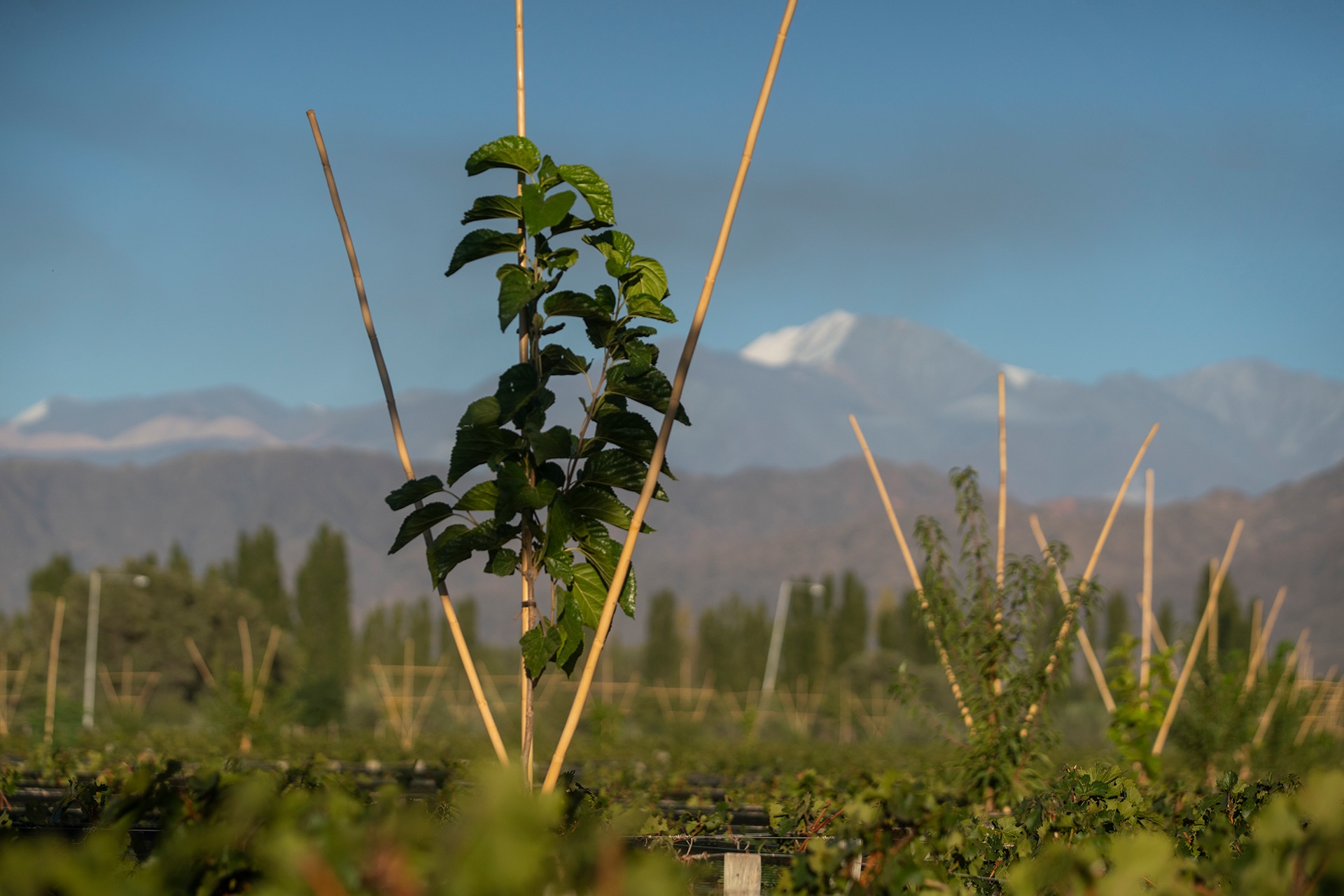
Agroforestery
Agroforestery at Cheval des Andes integrates trees into the vineyard to create a balanced, biodiverse ecosystem. Between 2021 and 2022, fruit and forest trees were planted within and around vine rows, alongside the establishment of small groves and a larger forest.
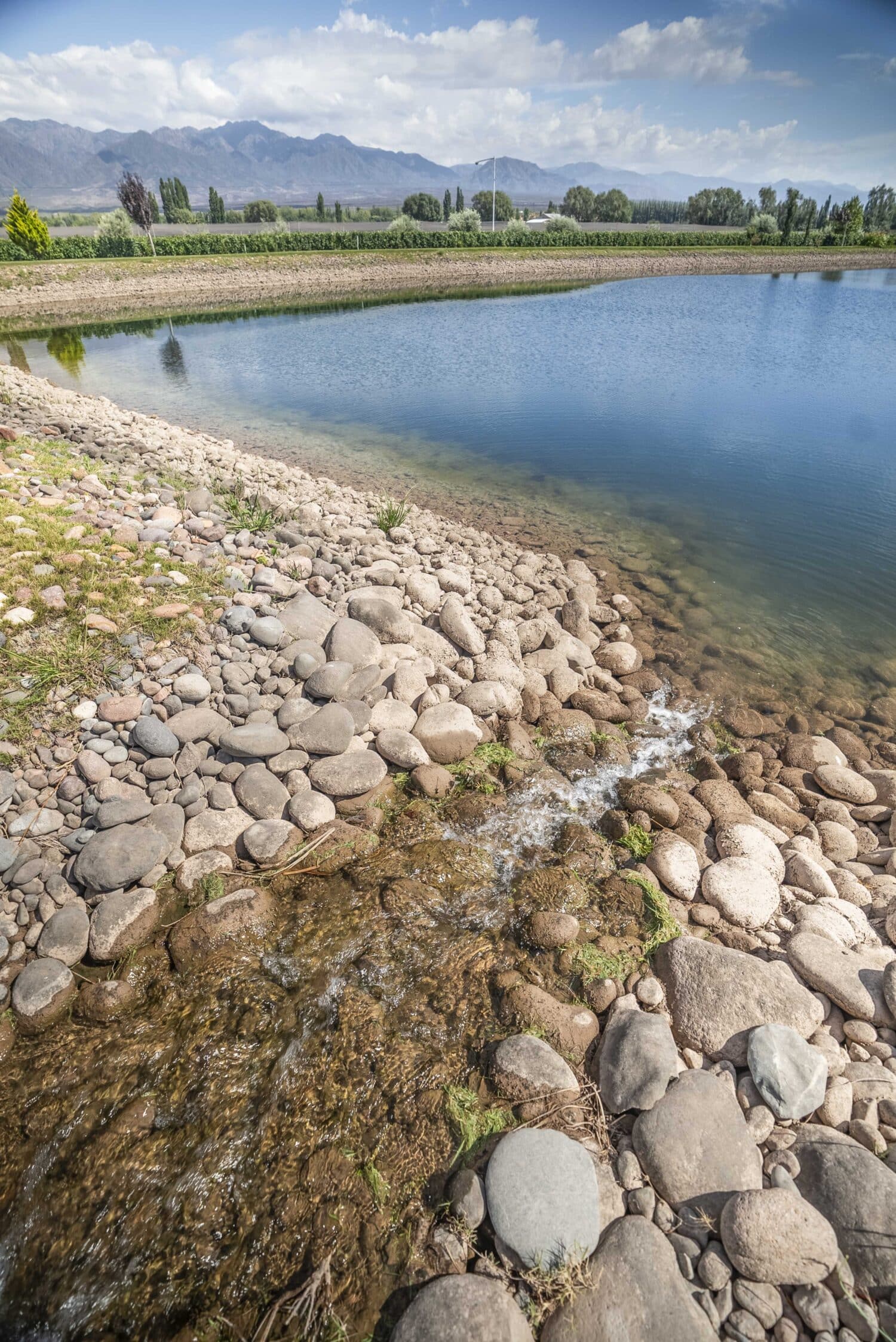
This approach brings multiple benefits. Above ground, tree canopies provide shelter for birds, bats, and insects that act as natural pest control. Pruned branches return to the soil, feeding fungi that enhance nutrient availability and improve soil fertility. Below ground, tree roots work with fungal networks to improve water and nutrient absorption for vines. Trees also access deep water during droughts and provide shade that regulates grape ripening and mitigates heat stress.
Some fruit species grown at Cheval des Andes: Peach trees, Apple trees, Pear trees, Almond trees, Pistachio trees, Olive trees, Cherry trees, Plum trees, Apricot trees.
Cheval des Andes has moved away from “clean,” herbicide-treated soils, which lack biodiversity and vitality. Instead, they cultivate living soils enriched by grasses, legumes, and flowering plants. These vegetative covers improve soil health, reduce temperature extremes, and foster a thriving ecosystem.
"In short, agroforestry reduces soil maintenance while enhancing sustainability, biodiversity, and the overall resilience of the vineyard."
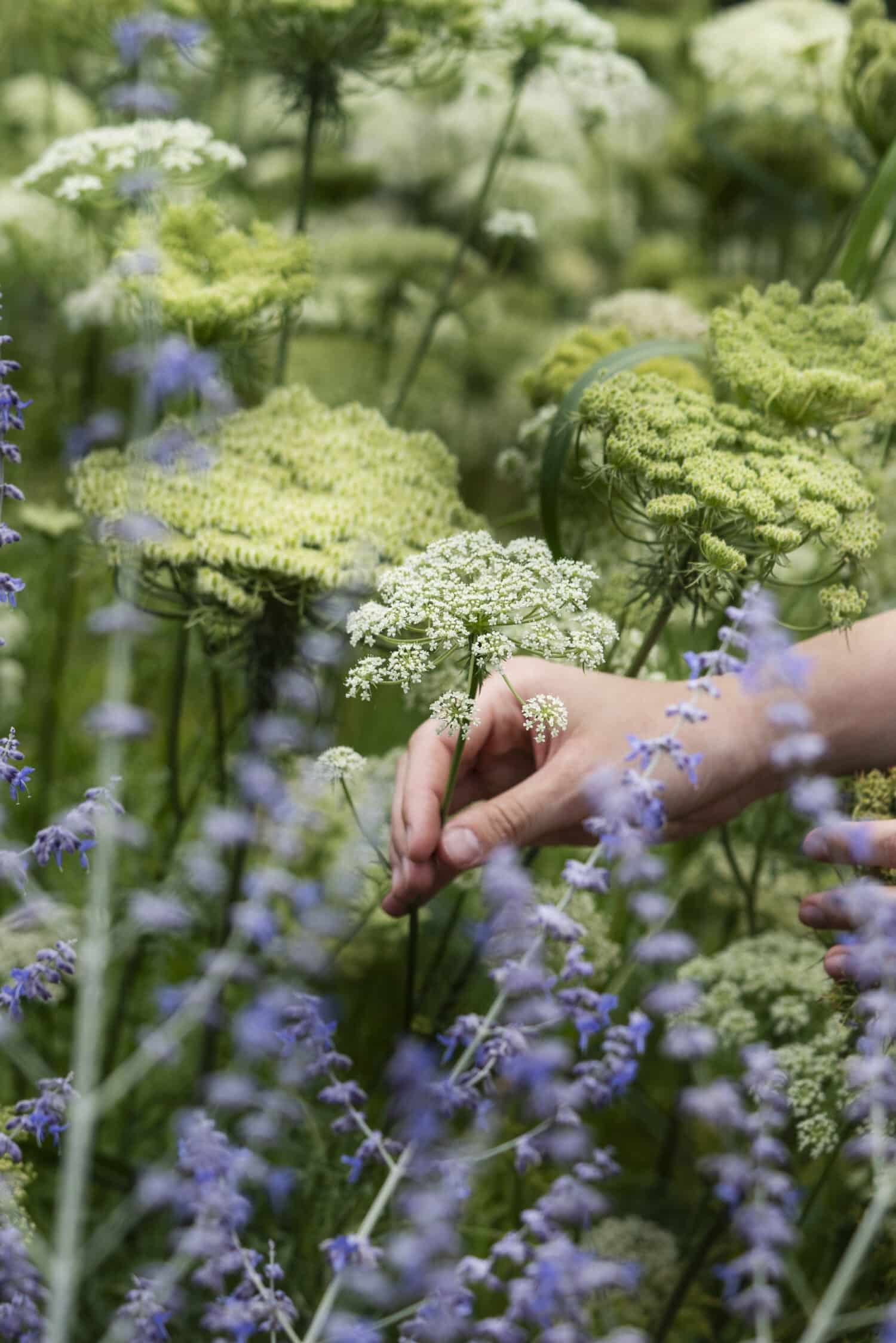
Polyculture
This concept focuses on cultivating diverse plant species and fostering their interaction with animals and insects. Such practices greatly enhance plant health, with natural fertilization—through guano or pruning residues—being a prime example.
“Part of the future is in the past”
Pierre Lurton
Argentina, shaped by immigrants from Spain, Italy, and France, embraced traditions like producing olive oil and vegetable preserves on family farms, particularly in Mendoza.
However, industrialization gradually overshadowed these customs. By growing our own fruits and vegetables, making preserves, and producing honey from our beehives, we are reconnecting with this cultural heritage and sharing it with our guests.
Our 10 beehives in Las Compuertas exemplify our commitment to the ecosystem. Bees, capable of pollinating within a 3-kilometer radius, play a vital role in maintaining environmental balance and biodiversity


